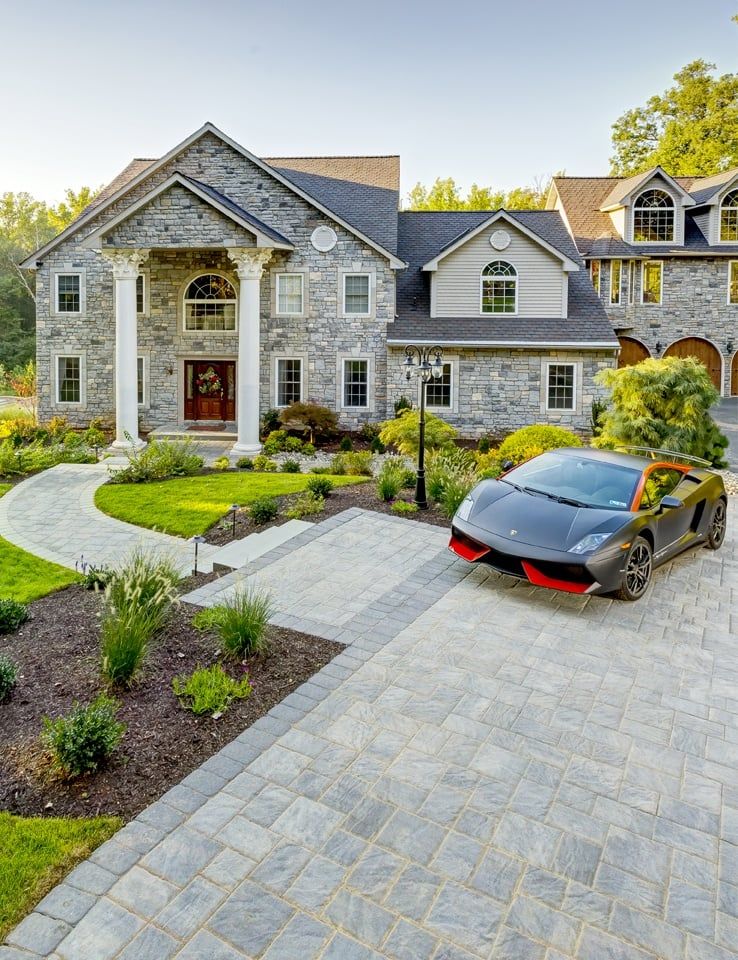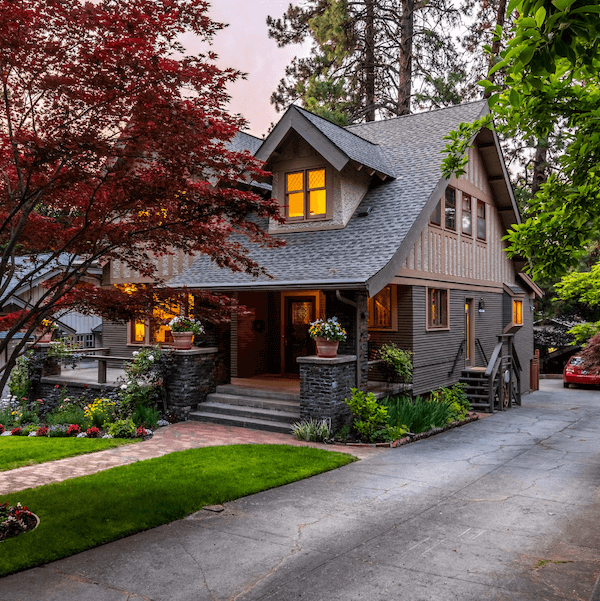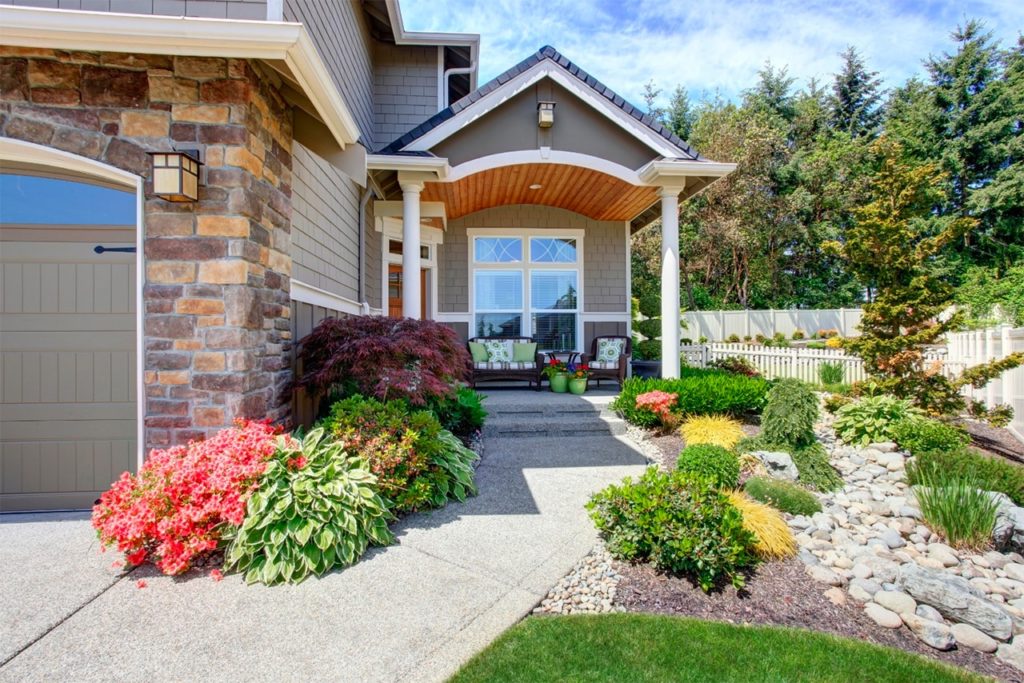First impressions matter, especially when it comes to your home. Whether you’re looking to sell your property or simply want to enhance its beauty, improving your curb appeal through smart landscaping ideas is one of the most cost-effective ways to add instant value. From manicured lawns to vibrant plantings and hardscape features, the right landscaping can transform a dull exterior into a standout home.
Here are some curb appeal landscaping ideas that add instant value to your property.


The first step to a healthy lawn is selecting the right type of grass. Georgetown, TX, experiences hot summers and mild winters, making it crucial to choose a grass that thrives in these conditions. Warm-season grasses like Bermuda, Zoysia, and St. Augustine are perfect for Georgetown’s climate, as they are drought-tolerant and grow best in warmer temperatures.
Bermuda grass is especially popular for its durability and ability to withstand heavy foot traffic, making it a great choice for families with kids and pets. Zoysia offers a lush, thick texture and is more shade-tolerant, while St. Augustine is ideal for areas with a mix of sun and shade. Planting the right grass ensures that your lawn is better equipped to handle the local weather and challenges.
Proper watering is essential to maintaining a lush lawn in Georgetown, TX. During the summer months, it’s tempting to water your lawn daily, but overwatering can lead to shallow root systems and weed growth. Instead, aim to water your lawn deeply but infrequently.
The best time to water is early in the morning, before the sun gets too hot. This allows the water to soak into the soil before it evaporates. Aim for about 1 to 1.5 inches of water per week, including rainfall. If you’re unsure, a simple way to measure water is to place a rain gauge or a small container (like a tuna can) on your lawn while watering. Once it fills up to about 1 inch, stop watering.
Aeration is a game-changer when it comes to lawn care in Georgetown, TX. Over time, the soil in your lawn can become compacted, which makes it harder for water, nutrients, and air to reach the roots of your grass. Aerating your lawn once a year (typically in the fall) creates small holes in the soil, improving the flow of essential elements to the root system.
There are two main ways to aerate: using a spike aerator, which punctures holes in the soil, or a core aerator, which removes small plugs of soil. Both methods are effective, but core aeration is generally preferred because it removes soil, creating more space for grass roots to grow.
Fertilizing your lawn is key to keeping it healthy and green. However, not all fertilizers are created equal, and it’s important to choose one that provides the right balance of nutrients for Georgetown’s soil. A soil test can help you understand your lawn’s specific needs, but generally speaking, a fertilizer with a balanced ratio of nitrogen, phosphorus, and potassium is ideal.
The best time to fertilize in Georgetown is during the growing season, typically in late spring or early summer, when the grass is actively growing. Avoid fertilizing in the winter months, as the grass is dormant and won’t benefit from the extra nutrients. Additionally, be sure to follow the recommended application rate to prevent over-fertilization, which can cause nutrient imbalances and harm your lawn.
Mowing is more than just a weekly chore—it’s a vital part of lawn care. One of the most common mistakes homeowners make is mowing their grass too short. Cutting your grass too short can stress it out, making it more vulnerable to disease and pests. Instead, aim to mow your lawn at a height of about 2.5 to 3 inches, depending on the type of grass. This encourages deeper root growth and helps the grass retain moisture.
Make sure your mower blades are sharp to avoid damaging the grass. Dull blades can tear the grass, leaving jagged edges that are more susceptible to disease. Mowing your lawn regularly and at the correct height will ensure a lush, healthy look year-round.
If you’re short on space or want quick changes, planters and window boxes are an excellent solution. Choose containers in materials that match your home’s architecture — think terracotta, ceramic, or wrought iron — and fill them with seasonal blooms or greenery.
Group planters at the entrance, steps, or porch for a warm and welcoming look.
Sometimes the simplest landscaping idea is the most effective. Regular maintenance — mowing the lawn, trimming bushes, raking leaves, and pressure-washing the driveway — goes a long way in improving curb appeal.
Also, don’t forget to:
Hide trash bins and hoses
Remove weeds from pathways
Clean gutters and downspouts
Small details like a stylish mailbox, upgraded door hardware, or modern house numbers can add a fresh and polished look to your home’s exterior. These upgrades are inexpensive yet impactful, especially when combined with a well-landscaped yard.
Create visual interest with a landscaping focal point such as a water feature, garden sculpture, birdbath, or even a small seating area. This gives your front yard a unique personality that stands out from the rest of the neighborhood.
Final Thoughts: Landscaping That Boosts Home Value
Investing in your home’s landscaping is not just about aesthetics — it can increase your property’s value by up to 15%, according to real estate experts. Prioritize projects that offer both beauty and functionality.
Remember, curb appeal landscaping ideas that add instant value don’t have to be expensive or labor-intensive. With smart planning, a weekend or two of effort can result in a dramatic transformation that’s sure to turn heads and attract potential buyers.


